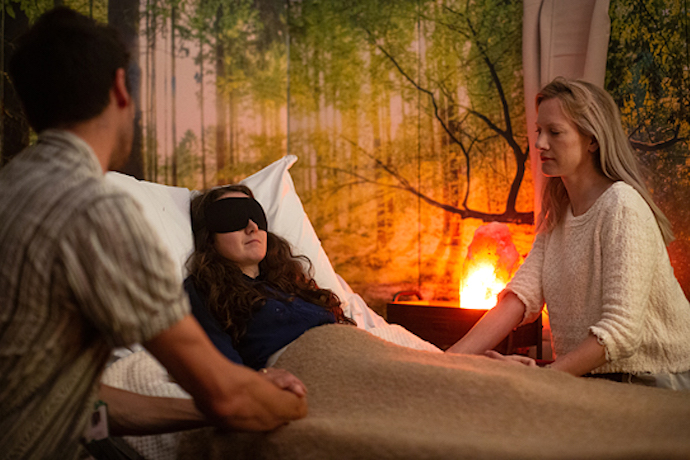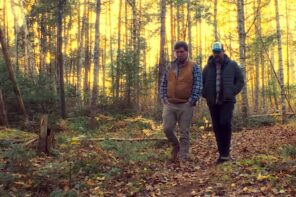Harvard University’s Center for the Study of World Religions recently held a discussion titled “What is Psychedelic Chaplaincy?”, the purpose of which was to explore the role that spiritual caregivers might play among those seeking and undergoing psychedelic experiences.
It’s a timely topic, as we seem to be living through a “psychedelic renaissance,” as moderator Rachel Petersen and others have said. In the past few years, we’ve seen interest in and discussion around psychedelics explode, from research into their therapeutic potential to successful initiatives to decriminalize and legalize their possession and use. With the likelihood of more people seeking out psychedelic experiences, more need arises for making their use as safe and effective as possible.
That’s where chaplains may come in. Chaplains could, the panelists agreed, function as guides during an experience itself. Most of the discussion, however, focused on how chaplains might help users understand and integrate their experiences in light of pre-existing faith commitments. As trained caregivers, chaplains could play an important role in the newly-emerging psychedelic landscape, providing guidance to those who may choose to incorporate the use of psychedelics into their own spiritual journeys. We could perhaps think about chaplains as psychedelic shepherds, directing users through the strange, yet potentially meaningful pastures of the mind and beyond to which these chemicals may provide access.
It’s probably plainly obvious that those advocating for psychedelic chaplaincy view such experiences as having religious value, whether in the moment or after the fact. Given that many users report having had spiritual experiences via their “trips,” it’s not surprising that the question of religion has dogged research into their use from the beginning.
Few would argue against the fact that, given the right intentions and conditions (or, to use the accepted lingo, “set and setting”), one can have an experience that at the very least approximates a religious, or even mystical, experience, as research bears out. Psychedelic experiences are malleable and their subjects suggestible, meaning that certain effects and outcomes can, to some extent, be primed and constructed. Simply put, if one wants to have a religious experience on, say, psilocybin, there’s a significant chance that one will.
That’s where, for the panelists, chaplains may come in, but not all agree that they should. What became clear from the discussion is that the panelists, Daan Keiman, a facilitator at the psychedelic retreat center Synthesis; Jamie Beachy, Director of the Center for Contemplative Chaplaincy Naropa University; and Trace Haythorn, Executive Director and CEO of the ACPE, were also vying for position in the newly-emerging, eventually legal psychedelic marketplace. Researchers, along with behind-the-scenes donors, investors, and advocacy groups, currently control that marketplace, at least the licit portions of it. As Beachy pointed out, however, it’s not at all clear that the current gatekeepers see the value of the contributions that trained, spiritual professionals might make.
Beachy isn’t just making assumptions. While some investigators are certainly sympathetic to a religious interpretation of the use of psychedelics, others have argued for a strictly secular approach. Beachy referenced, and the panelists discussed, a widely-circulated article by Matthew W. Johnson, the associate director of the Center for Psychedelic & Consciousness Research at Johns Hopkins. In it, Johnson cautions researchers to avoid the introduction of religious belief or sentiment, and vague, non-empirical language more generally, into research investigations and clinical trials. Researchers should, according to Johnson, take a thoroughly secular approach, leaving possible religious interpretations solely up to the participant.
Such a claim may on the surface seem banal, but it’s a response to certain investigative practices that may encourage, if not entirely determine, a spiritual or religious response. Johnson cites, for example, the use of religious iconography in clinical treatment rooms; a statue of the Buddha has been prominently displayed during sessions at Johns Hopkins. Likewise, the musical playlists used during sessions often feature religious pieces, especially ones associated with Christianity.
Symbolism specific to one tradition may, of course, be off-putting to those from other traditions or no tradition at all, but there are practical consequences as well. As Johnson puts it, “It will ultimately interfere with the mainstream adoption of these treatments to help the greatest number of appropriate individuals if they are approved as treatments, e.g., coverage by insurance and government medical programs.”
But arranging the “set and setting” in such ways also primes and privileges spiritual or religious experiences and their subsequent interpretation along the same lines. The panelists at “What is Psychedelic Chaplaincy?” recognized the importance of being sensitive to different motivations and diverse belief-systems, but they clearly lean toward religion, personally and by profession. More than once the panelists used language implying the inherently religious nature of psychedelic experiences.
But even Johnson himself is not immune from his own critique. He’s published studies on the relationship between psychedelic experiences and mystical-type experiences. Moreover, his crude definition of religion as “supernatural belief systems or frameworks that are not empirically based” leaves room for other, often vague religious or quasi-religious sentiments that do not directly appeal to the “supernatural.” He’s fine, for instance, with encouraging “spirituality” among participants, so long as it refers to things like “caring for one’s family and friends, a sense of belonging to a community and humanity, and having a sense of meaning in one’s life.” If “spirituality,” so understood, is the goal of therapeutic, psychedelic experiences, then it’s difficult to see why chaplains shouldn’t have a place at the table.
What both sides share, however, is the desire to medicalize, professionalize, and commodify the psychedelic experience. I want to be clear here that I’m by no means arguing against the therapeutic use of psychedelics. I find the evidence of their therapeutic potential convincing, though I think it’s wrong to portray their benefits as miraculous, as the media often does. What I’m suggesting instead is a broader discussion and a shift in frameworks.
As Vice’s Shayla Love has rightly pointed out, how we understand psychedelic experiences, even in clinical contexts, is indelibly shaped by “the psychedelic movement’s forefathers, like Aldous Huxley.” I’d suggest it goes back further, to William James’s description of his experimentations with nitrous oxide. Nevertheless, the point is that how we understand the psychedelic experience and its potential uses in therapeutic contexts doesn’t come out of a vacuum but, rather, relies on pre-existing assumptions and symbolic frameworks. This applies not only to religious interpretations but “secular” ones as well.
There’s nothing wrong with this per se, but if the goal is to push the boundaries of our understanding of these plants and chemicals and what they can do, then we should not limit ourselves to the strictures of clinical trials, therapeutic best-practices, and received understandings of spirituality and religion. Scholars of religion, and those working within the humanities more generally, have been conspicuously absent from the current research investigations, therapeutic designs, and discussions. But their particular expertise and skill-sets make them perhaps better equipped to contextualize, analyze, and critique the assumptions, language, and concepts currently in play, as a way to move research forward.
Moreover, a mass of first-hand data from decades of mostly illicit psychedelic use is readily available, on sites such as Erowid, but it’s largely ignored. Although such accounts may not be “scientific,” if the goal is to understand what psychedelics do and how they work, we should also look to those who have experience using them, often more experience than the investigators involved in current research. That should include indigenous knowledge surrounding psychedelics or “plant medicines.”
Appreciation of the latter among certain sets of users is, of course, common but it often occurs as appropriation and commodification, as can be seen in the popularity of ayahuasca. The panelists did express sensitivity for such concerns, which is often lacking among researchers. But taking indigenous knowledge about plant medicines seriously also means resisting the temptation to submit it to exogenous categories which include “spirituality” and “religion.”
What I’m suggesting, then, is that a real “psychedelic renaissance” should not limit itself to the parties currently at the table, for they don’t own psychedelics or the experiences that result from their use. Broadening the discussion can only increase our understanding of what psychedelics can do.





